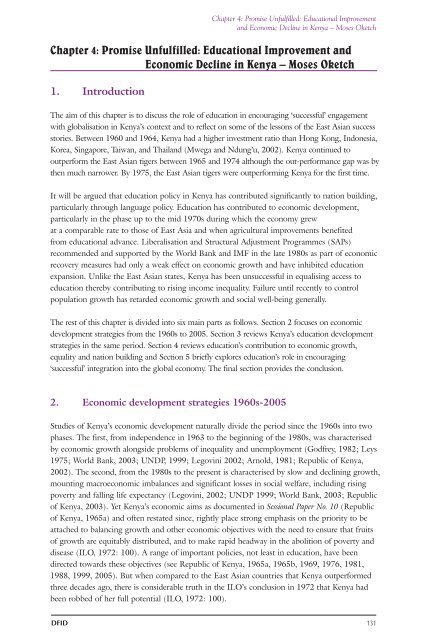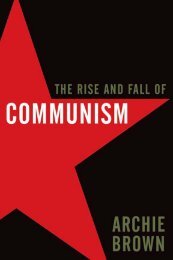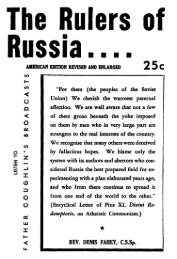education-dev-global-era-69
education-dev-global-era-69
education-dev-global-era-69
You also want an ePaper? Increase the reach of your titles
YUMPU automatically turns print PDFs into web optimized ePapers that Google loves.
1. IntroductionChapter 4: Promise Unfulfilled: Educational Improvementand Economic Decline in Kenya – Moses OketchChapter 4: Promise Unfulfilled: Educational Improvement andEconomic Decline in Kenya – Moses OketchThe aim of this chapter is to discuss the role of <strong>education</strong> in encouraging ‘successful’ engagementwith <strong>global</strong>isation in Kenya’s context and to reflect on some of the lessons of the East Asian successstories. Between 1960 and 1964, Kenya had a higher investment ratio than Hong Kong, Indonesia,Korea, Singapore, Taiwan, and Thailand (Mwega and Ndung’u, 2002). Kenya continued tooutperform the East Asian tigers between 1965 and 1974 although the out-performance gap was bythen much narrower. By 1975, the East Asian tigers were outperforming Kenya for the first time.It will be argued that <strong>education</strong> policy in Kenya has contributed significantly to nation building,particularly through language policy. Education has contributed to economic <strong>dev</strong>elopment,particularly in the phase up to the mid 1970s during which the economy grewat a comparable rate to those of East Asia and when agricultural improvements benefitedfrom <strong>education</strong>al advance. Lib<strong>era</strong>lisation and Structural Adjustment Programmes (SAPs)recommended and supported by the World Bank and IMF in the late 1980s as part of economicrecovery measures had only a weak effect on economic growth and have inhibited <strong>education</strong>expansion. Unlike the East Asian states, Kenya has been unsuccessful in equalising access to<strong>education</strong> thereby contributing to rising income inequality. Failure until recently to controlpopulation growth has retarded economic growth and social well-being gen<strong>era</strong>lly.The rest of this chapter is divided into six main parts as follows. Section 2 focuses on economic<strong>dev</strong>elopment strategies from the 1960s to 2005. Section 3 reviews Kenya’s <strong>education</strong> <strong>dev</strong>elopmentstrategies in the same period. Section 4 reviews <strong>education</strong>’s contribution to economic growth,equality and nation building and Section 5 briefly explores <strong>education</strong>’s role in encouraging‘successful’ integration into the <strong>global</strong> economy. The final section provides the conclusion.2. Economic <strong>dev</strong>elopment strategies 1960s-2005Studies of Kenya’s economic <strong>dev</strong>elopment naturally divide the period since the 1960s into twophases. The first, from independence in 1963 to the beginning of the 1980s, was characterisedby economic growth alongside problems of inequality and unemployment (Godfrey, 1982; Leys1975; World Bank, 2003; UNDP, 1999; Legovini 2002; Arnold, 1981; Republic of Kenya,2002). The second, from the 1980s to the present is characterised by slow and declining growth,mounting macroeconomic imbalances and significant losses in social welfare, including risingpoverty and falling life expectancy (Legovini, 2002; UNDP 1999; World Bank, 2003; Republicof Kenya, 2003). Yet Kenya’s economic aims as documented in Sessional Paper No. 10 (Republicof Kenya, 1965a) and often restated since, rightly place strong emphasis on the priority to beattached to balancing growth and other economic objectives with the need to ensure that fruitsof growth are equitably distributed, and to make rapid headway in the abolition of poverty anddisease (ILO, 1972: 100). A range of important policies, not least in <strong>education</strong>, have beendirected towards these objectives (see Republic of Kenya, 1965a, 1965b, 19<strong>69</strong>, 1976, 1981,1988, 1999, 2005). But when compared to the East Asian countries that Kenya outperformedthree decades ago, there is consid<strong>era</strong>ble truth in the ILO’s conclusion in 1972 that Kenya hadbeen robbed of her full potential (ILO, 1972: 100).DFID 131





